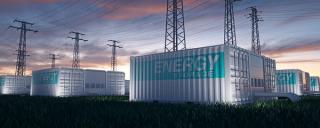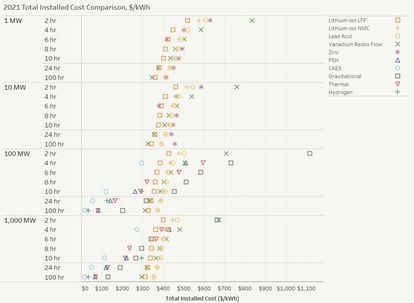
Unlocking Australia's renewable energy future: The power of long duration energy storage
- Post Date
- 18 August 2023
- Read Time
- 3 minutes

The modelling behind the 2023 SWIS Demand Assessment“ shows large-scale solar paired with long duration energy storage (LDES) as the most cost-efficient form of firmed renewable generation”. We’re already starting to see the value of energy storage play out with a steep upwards trend in utility-scale lithium-ion battery energy storage systems (BESS) being connected to Australian electricity systems and remote communities and mining operations. However, the sweet spot for these lithium-ion BESS project is on the shorter duration end of the storage spectrum. We need to see some more longer duration energy storage (LDES) projects be deployed as well, to help maintain a balanced and resilient electricity system.
The SWIS Demand Assessment (Future Ready scenario) predicts a need for approx. 6GW / 600GWh of LDES resources by 2042. So, you may ask, what will the technology mix look like for this. The figure below (2021 U.S. DOE research) shows one of the more recent cost comparisons between LDES technologies for different storage durations, noting compressed air energy storage (CAES), hydrogen and thermal, as some of the suitable solutions for 10+ hours storage duration. Australian technology companies like MGA Thermal with their thermal storage solution and Australia’s first Advanced Compressed Air Energy Storage (A-CAES) project are showing good promise. @SLR Consulting and our clients are also studying the domestic hydrogen market closely for its energy storage potential. It’s all about capturing excess renewable energy generation in storage and making it available at times of the day that meet our needs.

Figure reference: DOE
Discussions at the upcoming Energy Week Western Australia Conference will undoubtedly cover energy storage opportunities. In relation to building out the energy storage capacity of our electricity systems, there are three key opportunities of focus for the WA economy, its regulatory bodies and our clients:
- Reset our traditional unprocessed minerals offshoring model and develop more critical minerals processing capability in WA, supporting the battery supply chain, which results in more economic benefits for all Western Australians.
- Connect more longer duration energy storage to the SWIS (and NWIS) to improve renewable energy penetration and system resiliency. This ties in with the first opportunity when considering redox flow batteries that require electrolytic minerals like vanadium and phosphate.
- Lead the way globally on Sustainability and Responsible Sourcing of battery raw materials that set the bar for industry best practice on measures of human rights, environmental risks, carbon footprint and recycled content. These issues are now becoming regulated requirements for the international buyers of these materials (e.g., in Europe).Assurances on traceability, such as that provided by the RCS Global Battery Passport, will be essential to securing buyer trust.
The stage is set for Western Australia to spearhead an energy revolution driven by the synergy of solar and wind power with long duration energy storage. As the economic, environmental, and societal stakes continue to rise, the WA's strategic focus on critical minerals processing, energy storage integration, and sustainability leadership will position the State at the forefront of a cleaner, more resilient energy landscape.
Recent posts
-

-

Navigating the evolving landscape of corporate sustainability and communications in the US
by Chynna Pickens
View post -
